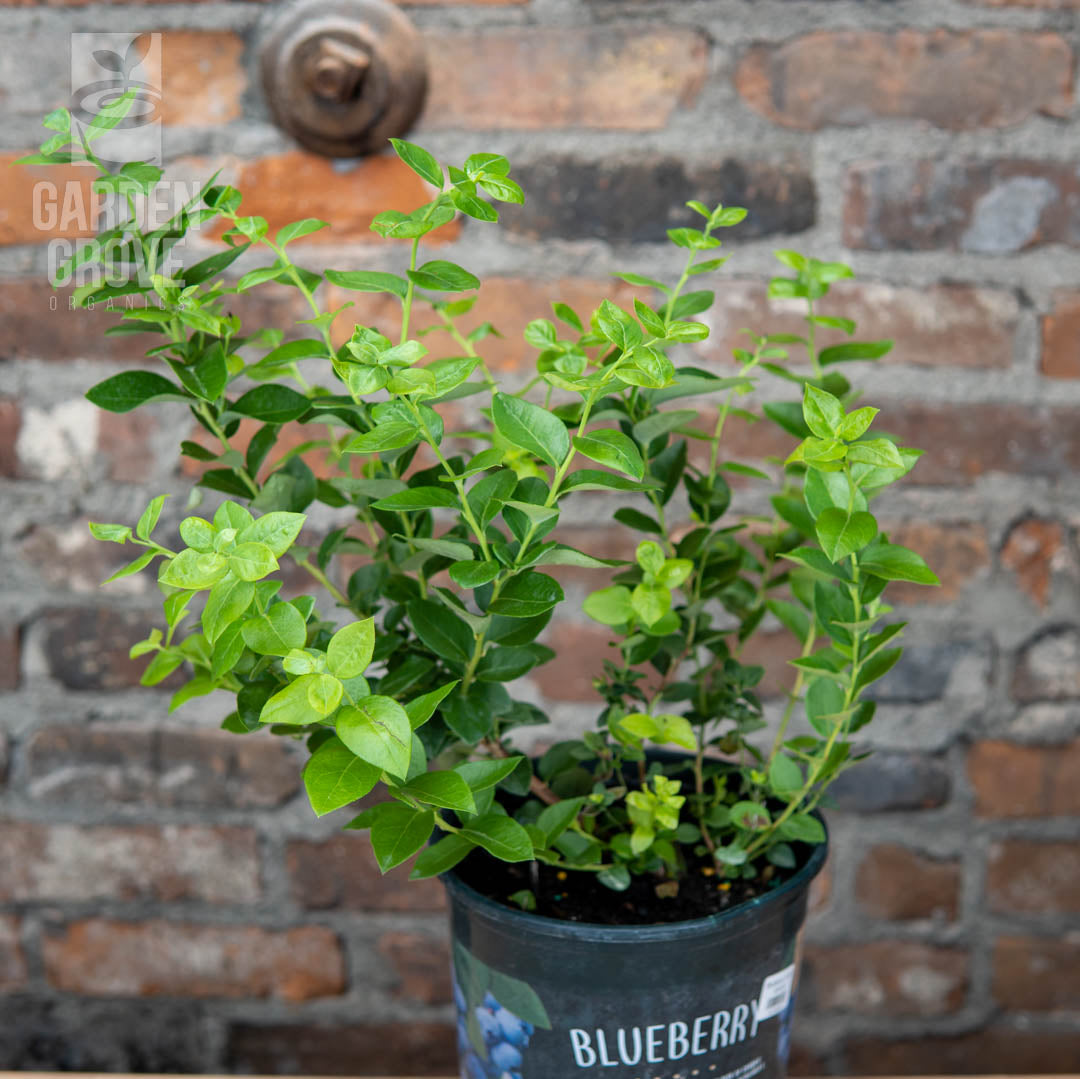Description
The blueberry plant, scientifically known as Vaccinium corymbosum, is a deciduous shrub that belongs to the Ericaceae family. It is native to North America and is highly valued for its delicious and nutritious berries.
Blueberry plants typically have an upright and bushy growth habit. They can range in height from around 3 to 10 feet (0.9 to 3 meters), depending on the variety. The leaves are elliptical or lance-shaped, glossy, and dark green in color, turning vibrant shades of red, orange, or yellow in the fall.
One of the notable features of blueberry plants is their clusters of small, bell-shaped flowers. The flowers are white or pale pink and appear in spring. They are pollinated by bees and other insects. After successful pollination, the flowers develop into berries.
The blueberry fruit is the most prominent and beloved part of the plant. The berries are round or slightly oblong, and their color can range from shades of blue to purple or black, depending on the variety. Blueberries are known for their sweet, juicy flesh and distinctive flavor. They are not only delicious but also packed with vitamins, antioxidants, and dietary fiber, making them a popular choice for fresh consumption, baking, jams, and other culinary uses.
Blueberry plants require specific growing conditions to thrive. They prefer acidic soil with a pH between 4.0 and 5.5. Adequate moisture is crucial, but good drainage is essential to prevent waterlogging. Blueberries thrive in full sun to partial shade, with at least six hours of direct sunlight per day. They generally require cross-pollination with another compatible blueberry variety to produce abundant fruit.
There are different varieties of blueberries, including highbush, lowbush, and rabbiteye. Each type has specific growth characteristics, flavor profiles, and preferred climates. It is essential to select varieties suitable for your specific region and climate.
Blueberry plants are deciduous, meaning they lose their leaves in the winter. Pruning is typically done during late winter or early spring to remove dead or damaged wood and to encourage new growth. Regular pruning helps maintain the shape of the plant and promotes better air circulation.
Blueberry plants are highly valued in home gardens, orchards, and commercial farms due to their fruit production and ornamental appeal. They can be grown in containers or planted directly in the ground, making them versatile for various gardening setups. Blueberries are also known to attract pollinators and can contribute to biodiversity in your garden.
Overall, blueberry plants are not only aesthetically pleasing with their foliage and flowers but also provide a bountiful harvest of nutritious and delicious berries, making them a rewarding addition to any garden or landscape.



Reviews
There are no reviews yet.